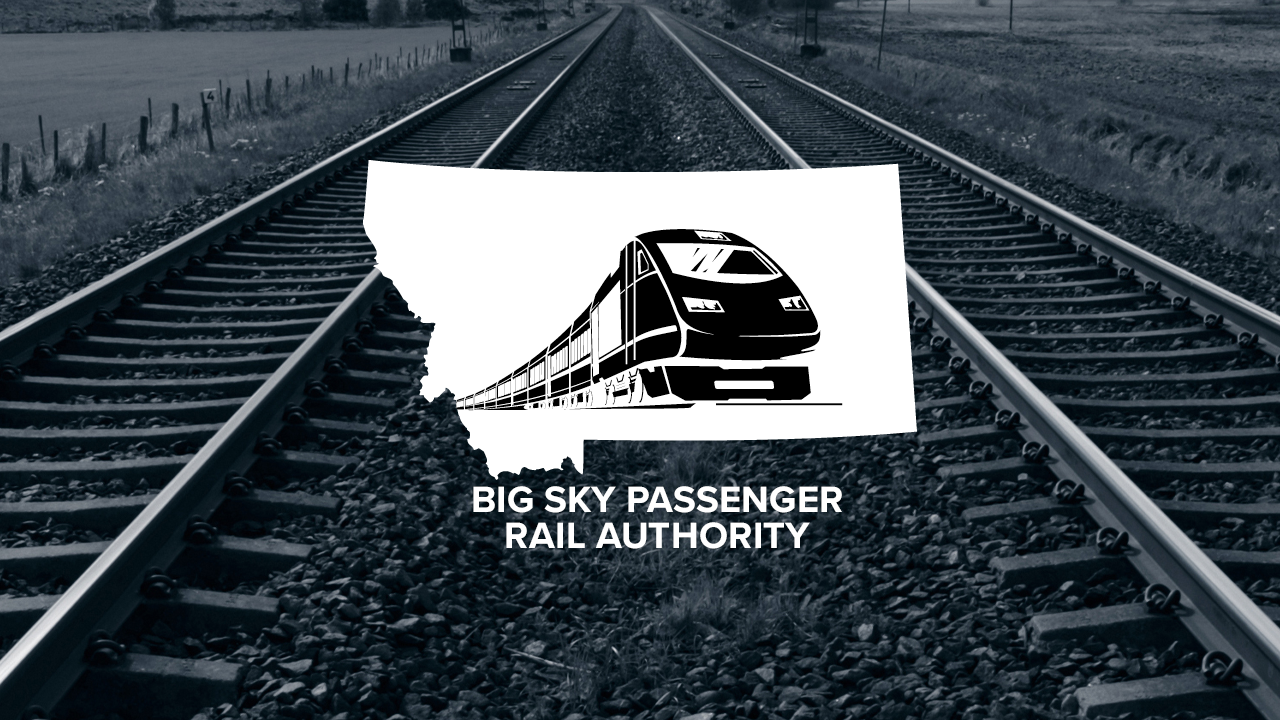MISSOULA — What started out as a lofty vision two years ago to restore passenger rail to southern Montana will receive a significant boost from the bipartisan infrastructure bill passed by Congress, and proponents are ready to move on the opportunity.
While more than 42 years have passed since the North Coast Hiawatha ran across Montana’s populated southern tier, the silver coach cars buckled behind an Amtrak locomotive heading to Seattle, Portland or Chicago could be closer to reality.
“This is probably one of the most transformational steps toward restoring long-distance passenger rail service in southern Montana than we’ve ever seen, at least since we last lost passenger rail service in 1979,” said Dave Strohmaier, president of the Big Sky Passenger Rail Authority and a Missoula County commissioner.

Sen. Jon Tester sat down with a team of Senate Democrats and Republicans to craft the Infrastructure Investment and Jobs Act. The measure passed the Senate and last week, it cleared the House and now waits for President Joe Biden’s signature.
Tester successfully included language in the bill that directs the U.S. Secretary of Transportation to study the restoration of long-distance routes across the country. The funding package provides $15 million to do so.
“Part of the legislative intent of this is to look at the North Coast Hiawatha across southern Montana and beyond,” said Strohmaier. “We’re fairly confident that the route we are primarily focused on will be part of the mix. We’re not taking anything for granted, but all along we’ve been taking steps to set ourselves up for success, given that we knew this day might come.”
Those steps included an economic analysis conducted by the National Passenger Rail Association exploring the potential benefits of restoring the North Coast Hiawatha.

Among the findings released in October, restoration of the route across Montana and six other states would generate more than $270 million in economic benefits and carry an estimated 420,000 passengers each year. It would cost Amtrak around $68 million to operate, though the cost would be offset partly by $41 million in fares and customer revenues.
The report also found that the route would bring service to roughly 47 stops across seven states ranging from Washington to Illinois. The benefits to the counties served by the stops would aggregate to around $70 million annually and generate nearly $5 million in visitor spending.
Given its potential, transportation authorities are paying attention, Strohmaier said.
“I’ve been in touch with the deputy administrator of the Federal Railroad Administration sharing with him, at his request, the findings of that study,” Strohmaier said. “We’ve done fairly significant outreach with the U.S. Department of Transportation. Folks in Washington, D.C., are very much aware of what we’re doing.”
Amtrak also has a representative on the board of the Big Sky Passenger Rail authority, which now includes 17 member counties stretching from east to west across the state. The authority has applied for federal grants to complete further route analysis.

“That money would fund a deeper dive in terms of the socio-economic benefits of restoring this route,” Stohmaier said. “We also applied for an economic development grant. Should we be successful with that, that would be applied toward route analysis and some staff to assist with community outreach.”
The analysis would also explore the benefits of the route on a region-wide basis. In the past, advocates of restoration have eyed possible service off the North Coast Hiawatha south from Billings to Denver.
Now, Strohmaier said, the study may look at that southern connection on a broader scale from El Paso, Texas, to Calgary, Alberta. It meets the true definition of long-distance rail and the spirit of the legislation, Strohmaier said.
“That’s in the vein of trying to set ourselves up for success. At the end of the day, what we’re trying to achieve is that our main goals are reflected in the study that the secretary of transportation initiates at the direction of Congress and Sen. Jon Tester, who sponsored that language.”

Recent studies also found that restoring the North Coast Hiawatha would have impacts similar to the Sunset Limited and Texas Eagle. Based upon the mix of urban, suburban and rural counties, the route would generate around 426,000 annual riders.
But the Hiawatha has been dormant for more than 40 years. If restored, the route would follow a “very heavily traversed corridor” along the old route that provided passenger service between 1971 and 1979.
Among other things, the infrastructure bill included $12 billion for actual route implementation. Of that, 20%, or around $2.4 billion, must go to long-distance routes.
“That’s the basement – a minimum of that $12 billion that must be spent for enhancements related to long-distance passenger rail routes,” Strohmaier said. “What we’re talking here in Montana is precisely that.”



